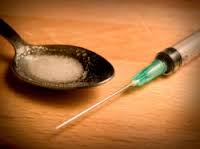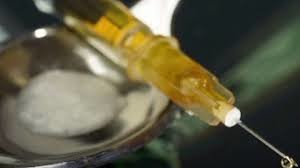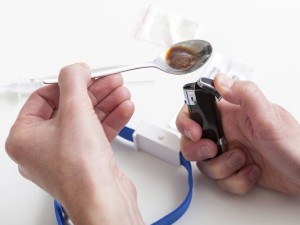Effects of Heroin Addiction and Treatment
Effects of Heroin Addiction and Treatment: The Disturbing realities of Heroin

Effects of Heroin Addiction and Treatment are just a drop of what you should know about heroin addiction. Seek for more information for you to be on top of this problem
While discussing the topic how well do you know heroin addiction in our previous article, we listed four questions of concern and were only able to discuss the first one. We want to take time and discuss the remaining three in this article to appreciate the effects of heroin addiction and treatment. Again we are going to be relying on the expert opinions from AWAREmed Health and Wellness Resource Center under the able leadership of doctor Dalal Akoury’s care. Dr. Akoury is also the founder of the facility and has been in the medical practice for well over two decades making her to be one of the most experienced medical doctors when it comes to drug addiction and other areas of concern.
How Do I Know if I Have a Heroin Problem?
- What is Heroin and how is it Used?
- Effects of Heroin Use
- Treatment for Heroin and Opiate Addiction
Effects of Heroin Addiction and Treatment: What is Heroin and how is it Used?
Heroin is an illegal, semi-synthetic drug processed from morphine, a substance extracted from the opium poppy. It is used as a recreational drug for the intense feelings of relaxation and euphoria it induces. Heroin is typically sold as a white or brownish powder or as a black, sticky substance known as “black tar heroin.” Most street heroin is “cut” with other drugs or with substances such as sugar or starch. Heroin can also be cut with poisons like strychnine.
Heroin is usually dissolved and injected, or the powder is snorted or smoked. All forms of heroin are psychologically and physically addictive, and a tolerance to the drug builds quickly. IV or intramuscular heroin use poses special problems because of the potential for transmitting infectious diseases. Over the past decade, researchers have observed a shift in heroin use patterns, from injection to snorting and smoking. With this shift comes an even more diverse group of users.
Effects of Heroin Addiction and Treatment: Effects of Heroin Use
Short-Term Effects: Soon after administration, heroin crosses the blood-brain barrier. Users report feelings a surge of intense pleasure (a “rush”). This is usually accompanied by a warm flushing of the skin, dry mouth, and a heavy feeling in the extremities. Nausea, vomiting, and severe itching may also occur. After the initial effects, the heroin user will typically be drowsy for several hours. Mental function is clouded by heroin’s effect on the central nervous system. Cardiac function slows. Breathing also slows sometimes to the point of death. The following are some of the short term heroin effects:
- Euphoria
- Depressed respiration
- Flushed skin
- Clouded mental functioning/sedation
- Nausea and vomiting
- Suppression of pain
- Infectious diseases
Long-Term Effects: One of the most harmful long-term effects of heroin abuse is addiction itself. Addiction is a chronic disease, characterized by compulsive drug seeking and use despite negative consequences, and by changes in the brain. Heroin also produces profound degrees of tolerance and physical dependence, which contributes heavily to abuse. Painful withdrawal symptoms occur if use is reduced abruptly. The following are some of the long term effects of heroin:
- Addiction
- Problems with the heart, liver and kidneys
- Overdose Risk
- Infectious diseases, for example, HIV/AIDS and hepatitis
- Collapsed veins
- Abscesses (at injection sites)
- Arthritis and other rheumatological problems
- Infection of heart lining and valves
- Depressed lung function
Effects of Heroin Addiction and Treatment: Treatment for Heroin and Opiate Addiction
Detoxification/”Detox”: The primary objective of detoxification is to relieve withdrawal symptoms, stabilize participants and prepare them for longer-term treatment. Symptoms of withdrawal most of which peak between 24-48 hours after the last use include: restlessness, muscle and bone pain, insomnia, diarrhea, vomiting, cold flashes with goose bumps and uncontrollable leg movements. Medications like Subutex may be used to minimize withdrawal symptoms.
Residential Drug Rehab: this is a situation where residential treatment participants come to live in a safe, supervised setting for 30 days or more. Normally the intention of residential rehab is to create an environment where patients are able to remain focus to the assignment of recovering from their addiction. Some of the services offered may include drug education both individual and group counseling, family counseling and making referrals by way of making introduction to community-based self-help groups & referrals to community resources.
Therapeutic Communities: Research published by The National Institute On Drug Abuse states that one of the most effective drug-free treatments are the therapeutic community (TC) programs lasting 3 to 6 months. TC programs are residential, with participants and therapists living together. The program length gives participants the time they need to stabilize from their drug use and to develop new, healthy behaviors and support networks.
Outpatient Treatment: More intensive treatments may be followed by outpatient treatment regular structured therapeutic groups and individual counseling several days a week, usually for several months. Outpatient participants have stabilized in terms of their drug use, and are appropriate for a level of care that isn’t monitored or structured 24/7.
Community-Based Self-Help Groups: Group like Narcotics Anonymous and Alcoholics Anonymous, along with non-12 step based programs, are designed to help addicts attain long-term abstinence. Group members gain new tools and support networks to deal with their addictions.
Maintenance Programs: Some heroin addicts do not find complete abstinence feasible. In these cases, a maintenance approach providing a small dose of medication so individuals can function without going into withdrawal is employed. The use of methadone, buprenorphine (Subutex) and levomethadyl has been found to most effective in the maintenance programs.
Finally the duty of managing heroin addiction must be done collectively and not to be left to the government authorities alone. All of us are affected and we all have a duty to perform. When doctor Akoury made the decision to form a medical center whose main objective is to transform each individual’s life through increasing awareness about health and wellness and by empowering individuals to find their own inner healing power, she was guided by this common fact of collective responsibility. Dr. Akoury’s practice focuses on personalized medicine through healthy lifestyle choices that deal with primary prevention and underlying causes instead of patching up symptoms. This makes her one of the best professionals you can rely on with your addiction problem. You can reach her on call to schedule for an appointment with her for the commencement of your addiction treatment.
Effects of Heroin Addiction and Treatment: The Disturbing realities of Heroin




